Co-op Students
Current Students
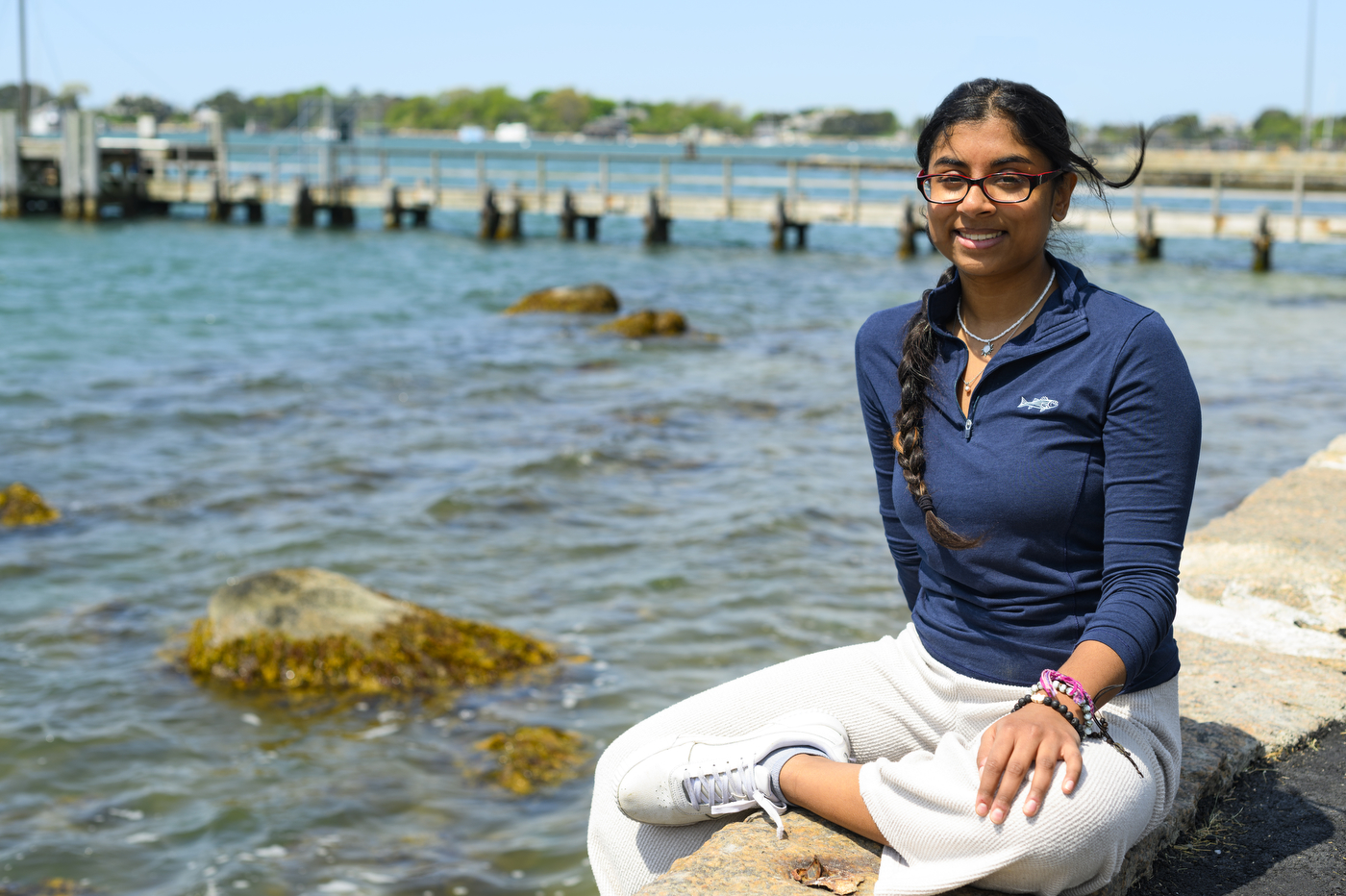
Anushka Rajagopalan
Current Co-op Student
I am a third-year undergraduate student at Northeastern University (Boston, MA) pursuing a Bachelor’s Degree in Ecology and Evolutionary Biology. My second co-op in Northeastern’s Co-Op Program is working as a Research Assistant at the Anderson Lab from January - June 2023. I am involved in an experimental project that studies the population dynamics and toxicity of Harmful Algal Bloom (HAB) species. Specifically, my role is to assist in analyzing water and sediment samples collected in Alaskan Arctic waters for Alexandrium catanella cells and to observe if specific environmental conditions, such as warming waters, impact bloom severity. Protocols involve using methods such as Fluorescent In Situ Hybridization (FISH), whole cell enumerations, culture transfers/preparations and R-programming data analysis.
(Photo by Alyssa Stone/Northeastern University)
Former Students
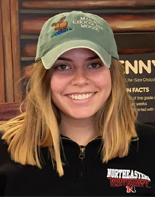
Taylor Mannes
Taylor was a co-op student in the Anderson Lab from May 2018 to December 2018. As a a fourth year Marine Biology co-op student, she was responsible for the maintenance of the samples that live in our many incubators. She monitored their growth, transfered additional strains for other researchers, and observed them under microscopes. During Summer 2018, she presented at the WHOI Undergraduate Research Forum about her role in Alexis Fischer's entrainment experiment. This project looked at the chilling requirements of Alexandrium catanella cysts from the Chukchi Sea and Greenland. Her participation involved processing sediment, isolating cysts from the sample, and observing them over the course of a few weeks for germination.
Nicole Card
Nicole came to the Anderson lab as third-year undergraduate student from Northeastern, studying environmental science with a concentration in conservation science. She was a co-op from January to May of 2018. She worked on Alexandrium and Gambierdiscus experiments by assisting with dinoflagellate culture maintenance and inoculation, sediment processing, and cyst isolation. She also assisted with field sampling during the 2018 field season in Nauset Marsh.
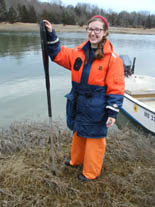
Grace DiCecco
Grace was a co-op in the Anderson lab from January to June of 2016. In the lab, she worked on microsatellite population analysis of Alexandrium fundyense, maintaining various dinoflagellate, diatom, and cyanobacteria cultures, and performing genomic DNA extractions on field samples. Grace also assisted in monitoring the spring bloom of A. fundyense in Salt Pond within the Nauset Marsh System by collecting water and sediment samples in the field; using whole cell hybridization and primuline staining to determine density of cells in the water column and cysts in the sediment.
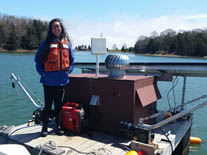
Natalie Kukshtel
Natalie worked as a co-op in the Anderson Lab from January to June of 2016. She assisted with the instrument raft used to monitor the spring bloom of Alexandrium fundyense in Salt Pond, located within the Nauset Marsh System. Using Python, Natalie programed the raft's three winch systems which control the movement through the water column of several monitoring instruments (CTD, Imaging Flow Cytobot [IFCB], Environmental Sample Processor [ESP], and High-Throughput IFCB). She also assisted with the construction, deployment, and maintenance of the raft as well as the collection of water samples throughout the bloom. My other work in the lab includes the primuline-staining and counting of Alexandrium cysts, collecting sediment cores for Alexandrium cyst surveys, performing whole cell hybridizations of Gambierdiscus cells, and helping with IFCB image classification.
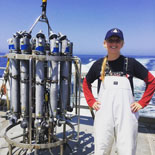
Kelsi Furman
Kelsi worked in the Anderson Lab from June to December of 2015. While here, she assisted those in the lab with culture care of various dinoflagellates and diatoms from the Arctic to the Caribbean, DNA extractions, PCR amplifications, gel electrophoresis, whole cell hybridizations, and Imaging Flow Cytobot (IFCB) data organization. she also helped with cell enumerations of Calcoflour-stained Gambierdiscus cells, hybridized adult Alexandrium cells, and primuline-stained Alexandrium cysts. She assisted in the field both in the Nauset Marsh System with IFCB work and Salt Pond nutrient and dissolved inorganic carbon sampling, as well as in the Gulf of Maine on the R/V Tioga for work with our Environmental Sampler Processors.
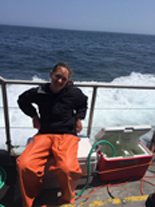
Kate Hudson
Kate co-oped in the Anderson Lab's Environmental Sample Processor (ESP) Lab under Bruce Keafer from June to December 2015. she was responsible for analyzing data from ESPjake deployed in the Eastern Gulf of Maine in the latter half of the 2015 field season; gearing down from the 2015 field season; assisting in a lab experiment with the ESP and the lab's Imaging Flow CytoBot (IFCB); and beginning preparations for the 2016 field season. During her co-op, she had the opportunity to go on four research cruises in the Gulf of Maine - ESPjake's deployment cruise (which started her first day!), ESPjake's groundtruth survey in July, the annual Pseudo-nitzschia cruise with Kate Hubbard from the Florida Fish and Wildlife Conservation Commission's Research Institute in August, and the annual NOAA Alexandrium cyst cruise in November.
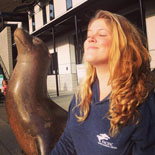
Lauren Henry
Lauren was a co-op under Mindy Richlen, studying the population genetics of Harmful Algal Blooms. During her time in Woods Hole, she analyzed microsattelite data for Alexandrium fundyense, helped develop a RFLP procedure for rapid Gambierdiscus species identification, and maintained the existing dinoflagellate and cyanobacteria cultures. Her biggest point of pride was establishing over 100 clonal cultures of Alexadrium sp. derived from mud samples taken from the Chukchi sea. Since her time at WHOI she has graduated with a BS in Biology, and currently works as a Reptile Handler. Her interest in harmful algal blooms hasn't waned, as she is also an animal care volunteer at Pacific Marine Mammal Center, helping to take care of sea lions stricken with Domoic Acid Poisoning, caused by the dinoflagellate Pseudonitchzia.
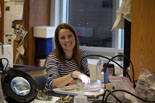
Mariah Livernois
As a Northeastern co-op in the Anderson lab, I assisted in a field survey of the Nauset marsh system and performed molecular analysis of cultured isolates of toxic algae. I graduated in May of 2015, and am currently working in a fisheries ecology lab at the Dauphin Island Sea Lab in coastal Alabama.